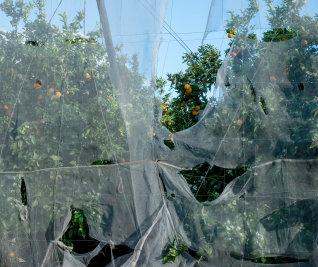
Natural disasters and their effects on horticulture
{Sponsored} Every year, natural disasters such as floods, fires, hurricanes, earthquakes and tornadoes provide challenges for professionals in the horticultural production industry.
These natural disasters are inevitable and, unfortunately, largely unpredictable. Across the country, greenhouses and nurseries can experience major losses, both in their structures and plants, due to natural disasters. And the effects from these disasters can not only leave short-term damage and headaches, but can turn into long-lasting issues with agricultural production.
According to the EPA, some of the impacts from natural events and disasters generally include destruction of irrigation systems and other infrastructure leaving greenhouses severely damaged.
Wildfires
Generally, wildfires are considered to only be a concern in the western part of the United States. For instance, from 2016-2018, over 7.3 million acres of land in California were devastated by uncontained fires, destroying homes, equipment and greenhouses, according to the Federation of American Scientists (FAS).
The reality, however, is that while many wildfires occur out west, a wildfire can break out in almost any geographical region of the country — like Florida and Georgia, for example, where in 2018 alone, the states experienced over 5,000 wildfires, according to the National Interagency Fire Center (NIFC).
Tornadoes
According to the National Oceanic and Atmospheric Administration (NOAA), an average of 1,253 tornadoes hit the country every year, most notably in the southeastern and midwestern regions, or “Tornado Alley.” In 2018 alone, over $672 million worth of damage in the United States was caused by severe thunderstorms producing tornadoes.
Tropical Storms
Throughout the East Coast, June to November is known for being tropical storm season. According to the National Hurricane Center, over 97% of tropical activity occurs along the eastern seaboard, bringing heavy rains, destructive winds and intense flooding. However, those located outside of “high-risk” flood zones are not free and clear, with FEMA reporting more than 20% of tropical-storm-related flood claims coming from properties outside these areas.
Whether threat of wildfires, severe thunderstorms or tropical activity endanger your business, review your policies to be sure you have your bases covered. View resources available on the Hortica® website to learn more about protecting your business and minimizing risk.
Want more information? Contact us at 800-541-5082, or visit hortica.com.
Hortica® property and casualty coverages are underwritten, and loss control services are provided, by Florists’ Mutual Insurance Company, Florists’ Insurance Company, and Florists’ Insurance Service, Inc., Edwardsville, IL, members of the Sentry Insurance Group. For more information, visit hortica.com. Policies, coverages, benefits and discounts are not available in all states. See policy for complete coverage details.
This document is of a general nature and is not intended to address the circumstances of any particular individual or entity. No one should act on the information contained in this document without advice from a local professional with relevant expertise.
77-139 4003340 7/30/19
© 2019 Hortica


 Video Library
Video Library 




















